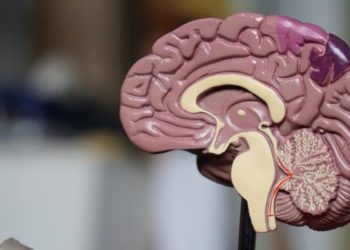FOCAL+ training program reduces the rate of collisions in teenage drivers with ADHD
1. The Enhanced Focused Concentration and Attention Learning (FOCAL+) training program, compared to control FOCAL program, reduced the number of long glances and deviations in lane position among teenage drivers with attention deficit-hyperactivity disorder (ADHD).
2. In real-world driving conditions monitored for one year, the participants in the FOCAL+ program had lower rates of long glances and collision or near-collision events.
Evidence Rating Level: 1 (Excellent)
Study Rundown: Teenagers with ADHD have difficulty sustaining visual attention to the roadway and have twice the rate of collisions as non-ADHD teenagers. In the laboratory, these effects are characterized as long glances (≥ 2 seconds) from the roadway and deviations in lane position. The FOCAL program is a single-session, desktop-based program that trains neurotypical drivers to reduce long glances away from the roadway. The present randomized control trial compares the effectiveness of FOCAL control and FOCAL+ intervention programs for teenage drivers with ADHD. Participants were first trained over five sessions and subsequently followed for one year. During the simulated driving evaluations at both one and six months after training, teenagers in the intervention group had significantly fewer long glances away from the roadway and deviations of lane position compared to the control group. In the year following training, teenagers in the intervention group had significantly lower incidences of long glances, near-collisions, and collisions during abrupt changes in vehicle momentum compared to the control group. As a limitation, the study could not evaluate the effect of ADHD medication on collisions or near-collisions. The study was also unable to evaluate whether the intervention program would be effective without previous driving training, such as coursework and supervised driving.
Click to read the study in NEJM
In-Depth [retrospective cohort]: This randomized control trial compared the effectiveness of control FOCAL and intervention FOCAL+ driving training programs in drivers aged 16 to 19 with ADHD. Participants were randomized in a 1:1 ratio to receive FOCAL (n = 76) or FOCAL+ (n = 76) and followed for one year. The primary outcomes were the number of long glances (≥ 2 seconds) away from the roadway and lane deviations in map search tasks during 15-minute simulated drives at one and six months. The secondary outcomes were the rates of long glances away from the roadway and collision events during abrupt changes in vehicle momentum (g-force event) during the one-year of real-world driving. The mean number of long glances was significantly lower in the intervention group compared to the control group at one month (16.5 and 28.0, respectively; incidence rate ratio, 0.64; 95% Confidence Interval [CI], 0.52 to 0.76; p<0.001) and six months (15.7 and 27.0, respectively; incidence rate ratio 0.64; 95% CI, 0.52 to 0.76; p<0.001). The standard deviation (SD) of lane position was also significantly lower in the intervention group compared to the control group at six months (adjusted mean difference, -0.22 SD; 95% CI -0.31 to -0.13; p<0.001). During the one year of real-world driving, participants in the intervention group had fewer long glances during g-force events than those in the control group (relative risk, 0.76; 95% CI, 0.61 to 0.92). Motor vehicle near-collisions and collisions occurred during fewer g-force events in the intervention group compared to the control group (relative risk, 0.60; 95% CI, 0.41 to 0.89). These results suggest that a modified FOCAL+ training program may be effective in improving attention and reducing the rate of collisions in teenage drivers with ADHD.
Image: PD
©2022 2 Minute Medicine, Inc. All rights reserved. No works may be reproduced without expressed written consent from 2 Minute Medicine, Inc. Inquire about licensing here. No article should be construed as medical advice and is not intended as such by the authors or by 2 Minute Medicine, Inc.







